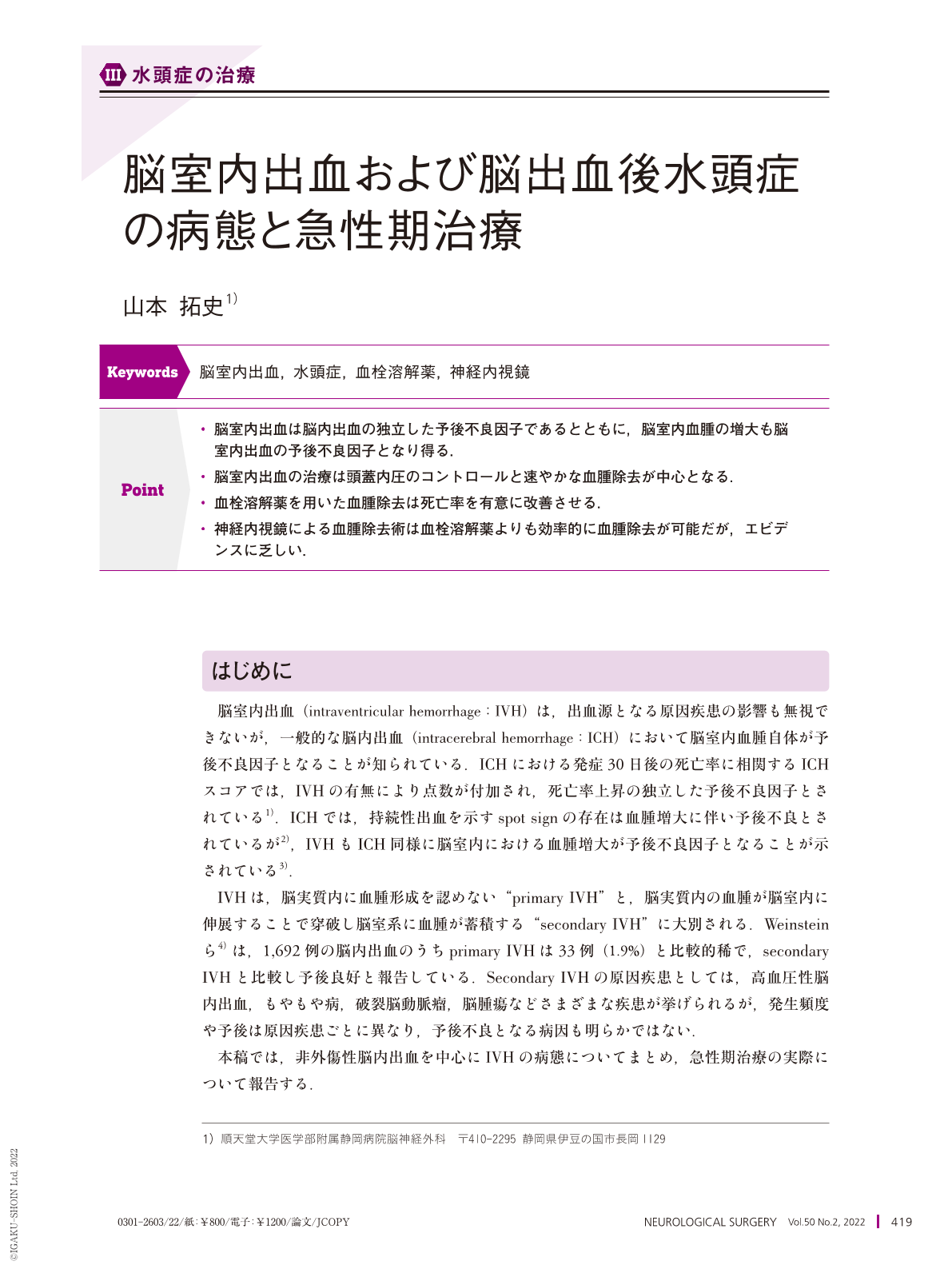Japanese
English
- 有料閲覧
- Abstract 文献概要
- 1ページ目 Look Inside
- 参考文献 Reference
Point
・脳室内出血は脳内出血の独立した予後不良因子であるとともに,脳室内血腫の増大も脳室内出血の予後不良因子となり得る.
・脳室内出血の治療は頭蓋内圧のコントロールと速やかな血腫除去が中心となる.
・血栓溶解薬を用いた血腫除去は死亡率を有意に改善させる.
・神経内視鏡による血腫除去術は血栓溶解薬よりも効率的に血腫除去が可能だが,エビデンスに乏しい.
Intraventricular hemorrhage(IVH)in patients with intracerebral hemorrhage is an independent risk factor. IVH can cause acute hydrocephalus by impairing cerebrospinal fluid dynamics. However, the pathological mechanism remains clear. In addition to the conventional concept of ventricular system obstruction by hematoma clots, secondary effects of heme and iron originating from hemoglobin might contribute to ventricular enlargement. The toxicity of accumulated hematoma in the ventricles might also influence the hydrocephalus and cause poor outcomes.
An external ventricular drainage should be inserted promptly to control the intracranial pressure. Moreover, the hematoma should be removed as soon as possible to minimize the toxicity of the hematoma. The use of thrombolytic agents significantly reduces both the duration of ventricular drainage and mortality compared to external ventricular drainage alone. However, the functional outcome is not improved in patients with IVH. As another surgical option, endoscopy may be useful to evacuate the hematoma immediately. Finally, more evidence is essential for establishing the effectiveness of endoscopic techniques.

Copyright © 2022, Igaku-Shoin Ltd. All rights reserved.


